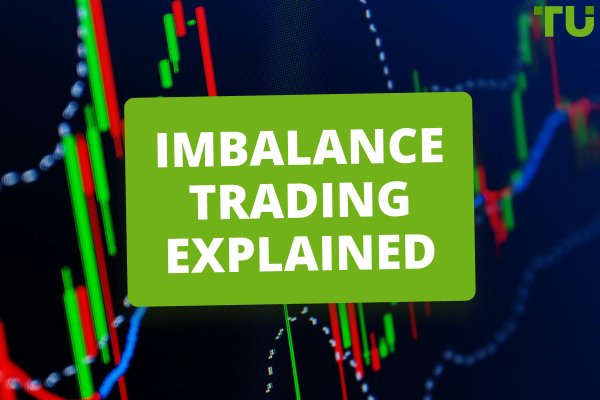Which indicator works best with RSI?
The Moving Average (MA) is often used in conjunction with the Relative Strength Index (RSI) to confirm trading signals. Other indicators used alongside RSI include the Bollinger Bands, Stochastic Oscillator, and the MACD.
Relative Strength Index (RSI) is a widely used technical indicator that can help traders identify overbought and oversold conditions in a market. However, RSI is considered as a momentum oscillator and can often be a lagging indicator, which is why it is often used in conjunction with other indicators.
Best indicators to use with RSI
In this article, the experts at TU will discuss using the Relative Strength Index (RSI) in technical analysis and the best indicators to use in conjunction with it. First, they will explore how RSI works and why it is a popular indicator among traders. Next, they will examine whether it is beneficial to use RSI with other indicators and its potential advantages. Finally, they will look at some of the best indicators to use with RSI, including how they can be used together to improve the accuracy of technical analysis.
How does RSI work?
The Relative Strength Index is designed to measure the velocity and magnitude of directional price movements.
Fundamental Mechanics
At its core, the RSI is a momentum oscillator, ranging between 0 and 100. It quantifies the speed and change of price movements, offering a graphical representation of market momentum.
The formula compares the average price increases over X periods to the average declines over X periods, thereby calculating the relative strength or weakness of the stock or asset in question.
Interpretation
Typically, an RSI value above 70 indicates that a security is becoming overbought or overvalued and may be primed for a trend reversal or corrective price pullback.
Conversely, an RSI value below 30 suggests an oversold or undervalued condition, signaling a potential upward turn in the price.
One critical aspect of RSI analysis is identifying divergences. When the RSI diverges from the actual market price, it can be an early indicator of a potential trend reversal. For example, if a security’s price hits a new high but the RSI does not, it may indicate weakening momentum and a possible sell-off.
Traders utilize RSI not only to assess overbought and oversold conditions but also to confirm trend formations or to spot potential entry and exit points based on RSI readings.
It is important to note that while RSI is a powerful tool, it is most effective when used in conjunction with other technical analysis tools and methods.
Should I use RSI with other indicators?
According to experts, using RSI in conjunction with other indicators can be beneficial for several reasons.
First, RSI is considered a momentum oscillator, meaning it is designed to measure the strength and speed of price movements. However, it does not provide any information about the direction or duration of those movements. This can make it challenging to interpret RSI signals on their own. Still, traders can get a complete picture of market conditions by combining RSI with other indicators that provide additional information about trend direction, support and resistance levels, or volatility.
Second, RSI is a lagging indicator that can confirm trends but can't predict them. Combining RSI with leading indicators can give a sense of an upcoming trend change which can be beneficial in making trading decisions.
Third, RSI alone doesn't account for any fundamental factors like economic indicators and the company's financials. Combining RSI with fundamental analysis will give a more comprehensive picture of a stock or a market condition.
Finally, using multiple indicators helps filter out false signals and increase the overall accuracy of technical analysis. It's not uncommon for an indicator to give a signal that ultimately proves to be incorrect; by using multiple indicators, traders can confirm or deny a signal.
In summary, using RSI in association with other indicators can provide traders with a more complete picture of market conditions, increase the accuracy of technical analysis, and help traders make more informed trading decisions.
What are the best indicators to use with RSI?
There are several indicators that can be used in conjunction with the Relative Strength Index (RSI) to improve the accuracy of technical analysis. Some commonly used indicators that work well with RSI include:
1. Moving Average: One of the most commonly used indicators in technical analysis, moving averages can be used to identify trends and help confirm RSI signals. Moving averages can be used in conjunction with RSI to confirm a trend's direction and identify potential support and resistance levels.
2. Bollinger Bands: Bollinger Bands are a volatility indicator consisting of a moving average and two standard deviation lines plotted two standard deviations away from the moving average. When RSI is combined with Bollinger Bands, traders can get a sense of whether an asset is overbought or oversold relative to its recent price history, which can help identify potential trend reversals.
3. Moving Average Convergence Divergence (MACD): The MACD is a momentum indicator that can help confirm the direction and strength of a trend. When combined with RSI, the MACD can help traders identify overbought and oversold conditions and potential trend reversals.
These are some examples of indicators that are commonly used with RSI. As always, it is recommended to use multiple indicators and combine them with other analysis methods like chart patterns, volume, and fundamentals before making a trading decision. It's also important to note that no single indicator is perfect and will provide accurate signals in all market conditions. Therefore, it's an excellent practice to backtest and verify the effectiveness of any indicator before using it in real-world trading.
Best brokers 2024



FAQ
What is the best RSI trading strategy?
The best RSI trading strategy may vary depending on the market conditions, personal preferences, and risk tolerance of the trader. Some popular strategies include using RSI to identify overbought and oversold conditions, using RSI to confirm trends, or using RSI to identify divergences.
Which time frame works best with RSI?
The best time frame for using RSI may vary depending on the trader's goals. Short-term traders may find that using RSI on a lower time frame, such as a 5-minute chart, is most effective. On the other hand, long-term traders may prefer to use RSI on a higher time frame, such as a daily chart.
Is RSI the most reliable indicator?
RSI is a widely used and popular indicator, but no single indicator is 100% reliable. RSI is considered a momentum oscillator, which can provide overbought and oversold conditions, but it should be combined with other indicators and analysis methods to make a complete trading strategy.
Are MACD and RSI a good combination?
Both RSI and MACD are momentum indicators and can be used together to identify overbought and oversold conditions and potential trend reversals. Both indicators are widely used in technical analysis, and when used together, they can provide a complete view of market conditions. However, It is essential to understand the characteristics of these indicators, and also, it's good to combine them with other indicators and analysis methods.
Glossary for novice traders
-
1
Broker
A broker is a legal entity or individual that performs as an intermediary when making trades in the financial markets. Private investors cannot trade without a broker, since only brokers can execute trades on the exchanges.
-
2
Trading
Trading involves the act of buying and selling financial assets like stocks, currencies, or commodities with the intention of profiting from market price fluctuations. Traders employ various strategies, analysis techniques, and risk management practices to make informed decisions and optimize their chances of success in the financial markets.
-
3
Index
Index in trading is the measure of the performance of a group of stocks, which can include the assets and securities in it.
-
4
Bollinger Bands
Bollinger Bands (BBands) are a technical analysis tool that consists of three lines: a middle moving average and two outer bands that are typically set at a standard deviation away from the moving average. These bands help traders visualize potential price volatility and identify overbought or oversold conditions in the market.
-
5
Volatility
Volatility refers to the degree of variation or fluctuation in the price or value of a financial asset, such as stocks, bonds, or cryptocurrencies, over a period of time. Higher volatility indicates that an asset's price is experiencing more significant and rapid price swings, while lower volatility suggests relatively stable and gradual price movements.
Team that worked on the article
Chinmay Soni is a financial analyst with more than 5 years of experience in working with stocks, Forex, derivatives, and other assets. As a founder of a boutique research firm and an active researcher, he covers various industries and fields, providing insights backed by statistical data. He is also an educator in the field of finance and technology.
As an author for Traders Union, he contributes his deep analytical insights on various topics, taking into account various aspects.
Dr. BJ Johnson is a PhD in English Language and an editor with over 15 years of experience. He earned his degree in English Language in the U.S and the UK. In 2020, Dr. Johnson joined the Traders Union team. Since then, he has created over 100 exclusive articles and edited over 300 articles of other authors.








